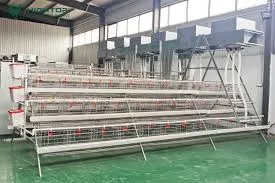farrowing pens
Oct . 20, 2024 17:34 Back to list
farrowing pens
The Importance of Farrowing Pens in Modern Pig Farming
Farrowing pens are an essential component of modern pig farming, specifically designed to accommodate sows during the farrowing (birthing) process and the initial days of piglet rearing. These specialized pens play a crucial role in ensuring the health and well-being of both the mother and her piglets, ultimately leading to a more efficient and productive farming operation.
Design and Features of Farrowing Pens
Farrowing pens are typically constructed to provide a safe, comfortable, and hygienic environment for sows and their piglets. One of the key features of these pens is their design, which aims to protect piglets from accidental crushing by the mother. The pens often include a partition or a creep area, allowing the piglets to access food and water while keeping them safe from the larger sow. The layout encourages the sow to lie down without endangering her newborns, significantly reducing the risk of mortality.
Moreover, farrowing pens are designed with proper ventilation and temperature controls to create an optimal environment for a sow and her litter. Sows can be particularly sensitive to temperature changes, and providing a stable and comfortable climate is vital. Heated areas may also be included, especially for the piglets, as they are unable to regulate their body temperature effectively in the early days of life.
Nutritional Management
Nutrition plays a significant role in the success of farrowing pens. Sows require a carefully balanced diet to ensure they are in peak health during pregnancy and lactation. Proper nutrition not only supports the sow's physical condition but also enhances milk production, which is crucial for the nourishment of the piglets. Implementing nutritional strategies alongside the use of farrowing pens can lead to healthier litters, improved growth rates, and ultimately, better returns for farmers.
farrowing pens

Enhanced Monitoring and Management
Incorporating technology into farrowing pens can further enhance management practices. Automated feeding systems can provide sows with precise nutritional requirements, and monitoring systems can be installed to ensure piglets are receiving adequate milk. Additionally, using cameras within the pens allows farmers to monitor the farrowing process remotely, giving them peace of mind and enabling them to intervene when necessary.
Biosecurity and Health Considerations
Biosecurity is paramount in pig farming, and farrowing pens can be designed with this in mind. A clean, contained environment reduces the risk of disease transmission among sows and piglets. Regular cleaning and disinfection practices within farrowing pens are essential to maintain health standards and prevent outbreaks of diseases such as Porcine Reproductive and Respiratory Syndrome (PRRS).
Furthermore, the layout of farrowing pens can facilitate the isolation of sows showing signs of illness, thereby protecting the rest of the herd. Health monitoring can be improved with the use of electronic identification systems to track each sow's health, reproductive cycle, and offspring's growth.
Conclusion
Farrowing pens are indispensable in optimizing pig production. They contribute significantly to the safety, health, and well-being of sows and their piglets while facilitating modern farming practices. Through careful design, nutritional management, technological integration, and strict biosecurity measures, farrowing pens enable farmers to enhance productivity and profitability in their operations. As the demand for sustainable and efficient pig farming continues to grow, investing in high-quality farrowing pens will remain a priority for producers looking to improve their practices and outcomes in the industry. The overall success of pig farming increasingly hinges on how well we manage the unique needs of these animals during one of the most critical phases of their lives.
-
Automatic Feeding Line System-Pan Feeder Nipple Drinker|Anping County Yize Metal Products Co., Ltd.
NewsJul.29,2025
-
Hot Sale 24 & 18 Door Rabbit Cages - Premium Breeding Solutions
NewsJul.25,2025
-
Automatic Feeding Line System Pan Feeder Nipple Drinker - Anping County Yize Metal Products Co., Ltd.
NewsJul.21,2025
-
Automatic Feeding Line System Pan Feeder Nipple Drinker - Anping County Yize Metal Products Co., Ltd.
NewsJul.21,2025
-
Automatic Feeding Line System - Anping Yize | Precision & Nipple
NewsJul.21,2025
-
Automatic Feeding Line System - Anping Yize | Precision & Nipple
NewsJul.21,2025






